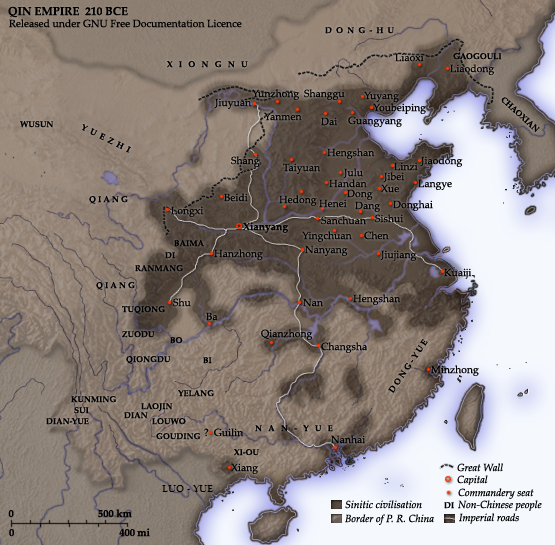A 4,700 mile network of roads was developed to ease travel in the empire and to the frontiers. Regular staging posts allowed horses to be changed frequently and provided places to sleep at night. The single width of cart axles encouraged trade as there was no delay in moving goods through the provinces. All carts would travel in the same wheel ruts and there would be no need to change to a cart with a different axle width in different provinces.
Standard roads and single width axles were enabling constraints because the helped develop commerce. On the other hand, standardization of thought imposed by Qin turned ugly. They ordered and enforced destruction of all books that were in conflict with their ideology. Moreover, because at the time thought was largely transferred through oral teachings, Qin buried alive hundreds of Confucian scholars, who disagreed with Legalism.
Contrast this with Facebook, which established a standard way of communicating between people (social utility as Zuckeberg calls it) but allowed for free expression on top of the utility.
tags: constraint, payload, distribution, facebook, social, network, infrastructure

No comments:
Post a Comment